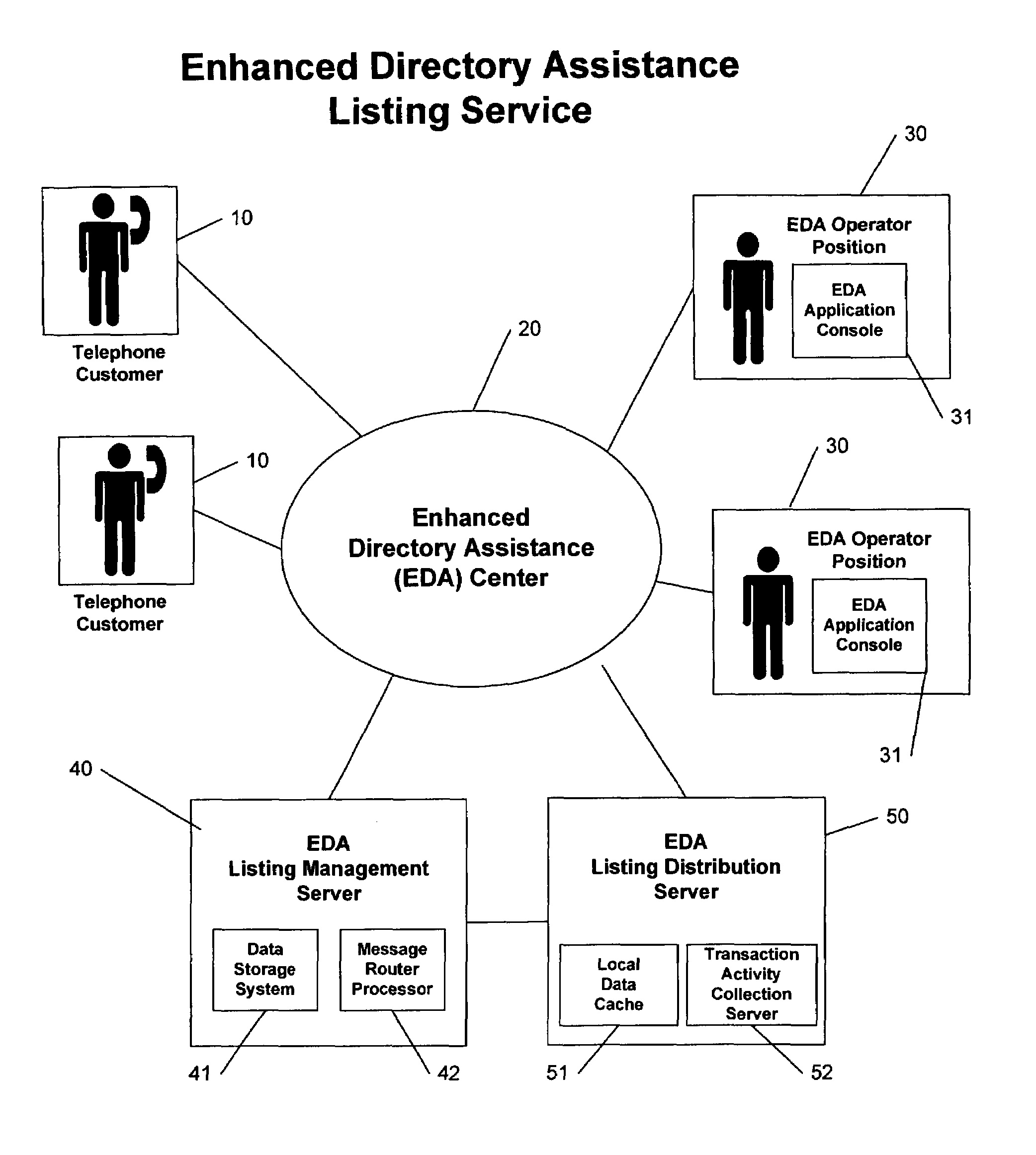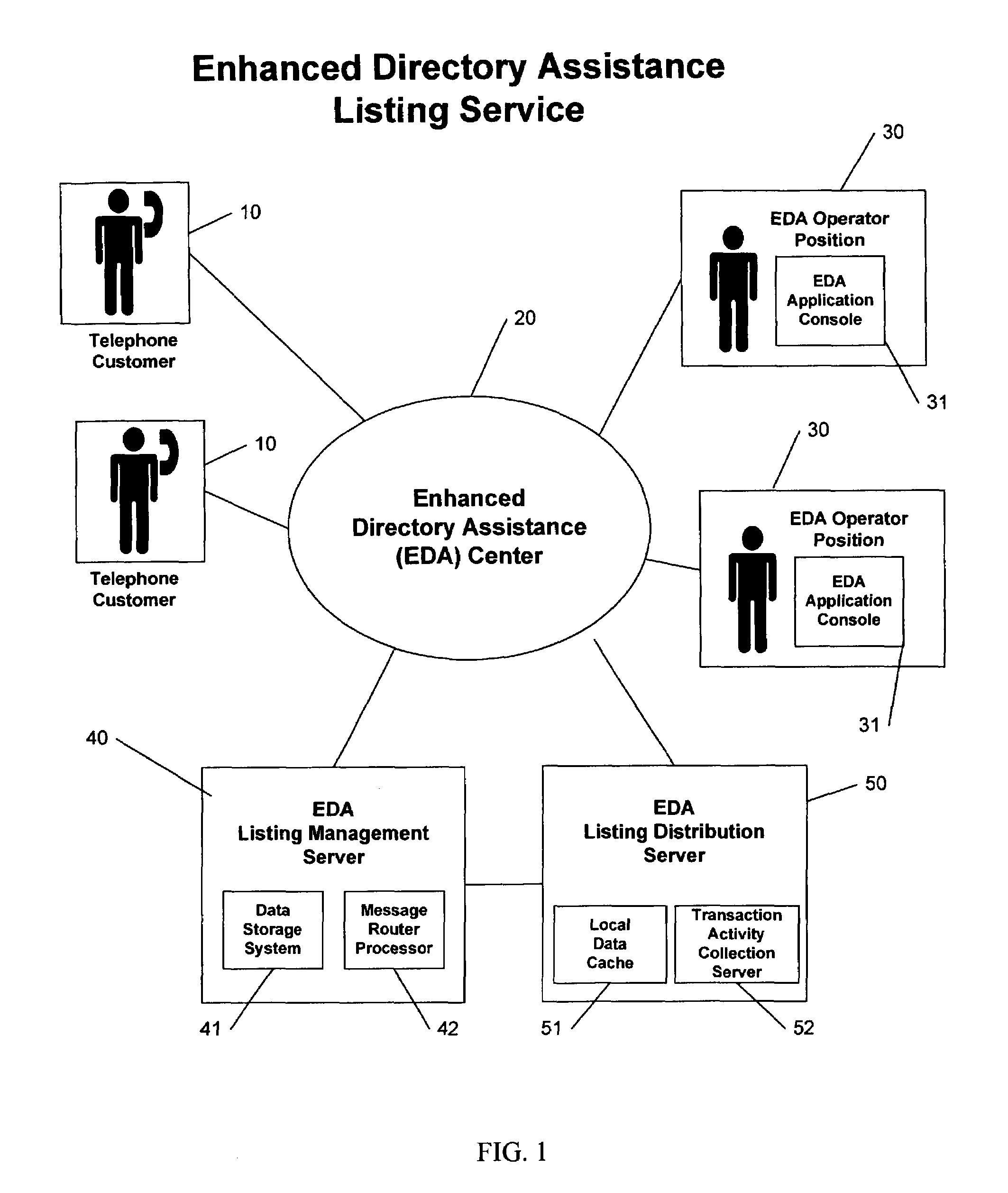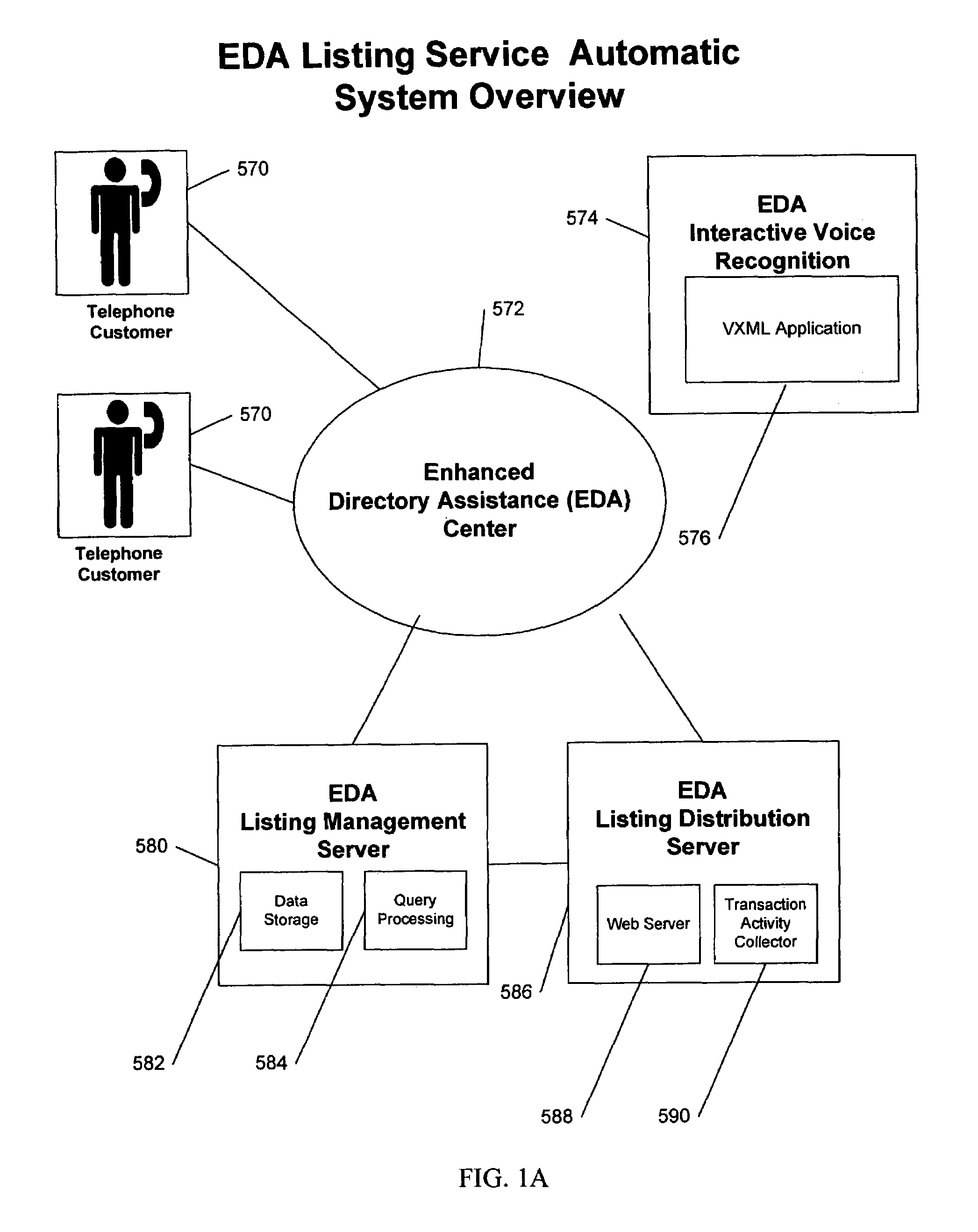Enhanced directory assistance services in a telecommunications network
- Summary
- Abstract
- Description
- Claims
- Application Information
AI Technical Summary
Problems solved by technology
Method used
Image
Examples
Embodiment Construction
[0025]Throughout this description, the embodiments and examples shown should be considered as exemplars, rather than limitations on the apparatus and methods of the present invention.
[0026]Enhanced Directory Assistance (EDA) services provide opportunities for telephone listing owners and advertisers to promote their products and services to telephone callers looking for the same products and services. The EDA system disclosed here provides a method and system whereby directory assistance is enhanced to deliver a targeted advertising service to telephone listing owners and advertisers.
[0027]In reference to FIG. 1, the illustration shows a preferred implementation of a basic EDA service implementation. A telephone customer 10 connects to an EDA Center 20. An EDA operator position 30 at the EDA Center processes the call with an EDA application console 31. The EDA application console connects to an Enhanced Directory Assistance Listing Management Server (LMSvr) 40 that contains a teleph...
PUM
 Login to View More
Login to View More Abstract
Description
Claims
Application Information
 Login to View More
Login to View More - R&D
- Intellectual Property
- Life Sciences
- Materials
- Tech Scout
- Unparalleled Data Quality
- Higher Quality Content
- 60% Fewer Hallucinations
Browse by: Latest US Patents, China's latest patents, Technical Efficacy Thesaurus, Application Domain, Technology Topic, Popular Technical Reports.
© 2025 PatSnap. All rights reserved.Legal|Privacy policy|Modern Slavery Act Transparency Statement|Sitemap|About US| Contact US: help@patsnap.com



